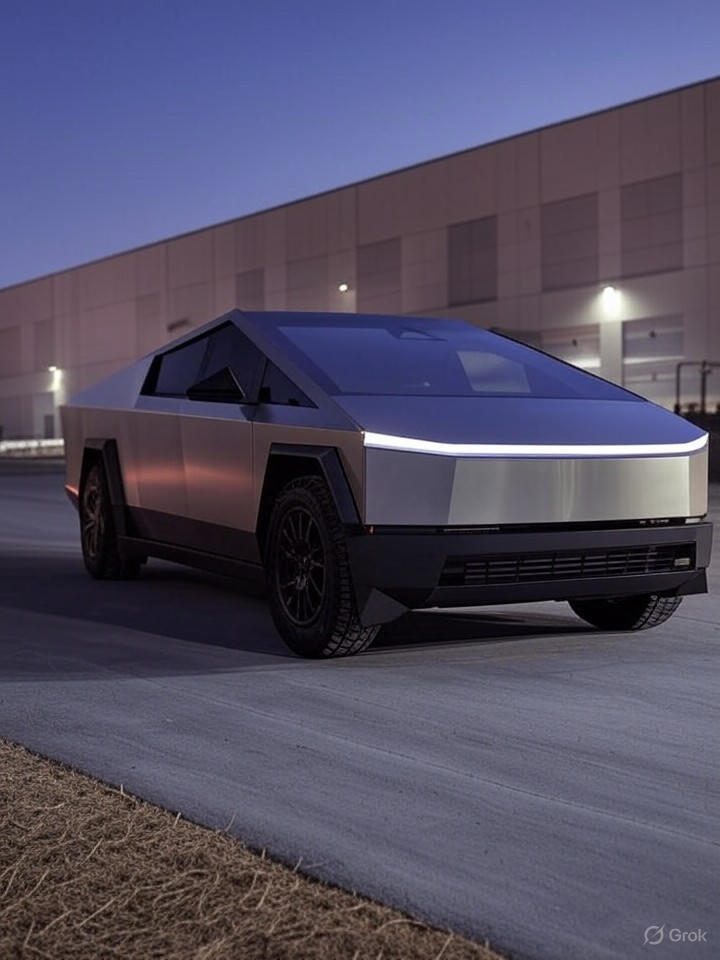In the ever-evolving world of electric vehicles, Tesla Inc.’s Cybertruck has once again captured headlines with its purported “sold out” status, but a closer examination reveals a more nuanced reality. According to a recent report from Gizmodo, the company’s website now indicates that new orders for the futuristic pickup won’t be fulfilled until 2025, signaling high demand or strategic production pacing. This development comes amid Tesla’s broader efforts to ramp up manufacturing at its Gigafactory Texas, where the Cybertruck entered limited production in late 2023.
Yet, industry observers note that this sold-out label applies primarily to certain configurations, such as the high-end Cyberbeast tri-motor variant, while base models remain available with longer lead times. Tesla’s official site, as detailed on Tesla.com, lists three variants: the Cyberbeast, a dual-motor all-wheel-drive model, and a single-motor rear-wheel-drive option, with EPA ranges spanning 320 to 350 miles. Deliveries have been underway since November 2023, but the company’s ambitious targets have faced scrutiny.
Update: One reader of this article wrote in to relay some concerning news if true:
Tesla employees here in Austin tell us that it is being done because Tesla corporate has decided not to make any more CTs. They don’t want to take any more orders for a discontinued model. The company plans to very quietly discontinued manufacturing them to save face, since this is the only model Elon destined…so it’s a sensitive subject.
Unpacking the Sold-Out Phenomenon
Recent data from automotive analytics firm Kelley Blue Book, cited in a TechSpot analysis, shows Tesla sold just 4,306 Cybertrucks in the second quarter of 2025—a 50.8% drop from the previous year. This decline contrasts sharply with Elon Musk’s earlier projections of 250,000 units annually by 2025, as echoed in posts on X (formerly Twitter) where users like analyst Troy Teslike estimated only 21,000 to 28,000 sales for the year. The figures suggest that while initial reservations topped 2 million, conversion rates have hovered around 2.5%, leading to inventory buildup and occasional discounts.
Production challenges have compounded the issue. A recall in early 2025 affected thousands of units due to accelerator pedal issues, slowing output to roughly 760 vehicles per month initially, far below the 21,000 needed to meet Musk’s goals, per X discussions from users tracking Tesla’s progress. Despite this, Tesla confirmed in its Q2 delivery report, as reported by Electrek, that quarterly sales dipped to about 5,000 units, underscoring a shift from production constraints to demand limitations.
Market Dynamics and Competitor Pressure
Comparisons with rivals paint a stark picture. News from Yahoo Finance highlights how the Cybertruck was outperformed by Ford’s F-150 Lightning and GMC’s Hummer EV in Q2 2025, with Ford maintaining dominance in the electric pickup segment. Tesla’s vehicle, priced from $79,990 for the base model up to $99,990 for the Cyberbeast, faces pricing pressures in a market where average vehicle costs have risen, yet consumer hesitancy persists due to the truck’s polarizing angular design and stainless-steel exoskeleton.
Insiders point to broader economic factors, including high interest rates and competition from legacy automakers scaling EV production. A Fortune article notes that despite the massive preorder backlog—enough for 16 years at current rates—actual sales plummeted to 4,300 units in the recent quarter, prompting Tesla to focus on software updates like the 2025.26 release, which adds overload warnings for towing, as covered by Not a Tesla App.
Production Ramp-Up Strategies
Tesla’s response has been multifaceted. At Gigafactory Texas, efforts to boost output include new manufacturing techniques for the truck’s unique body, which Wikipedia describes as drawing from low-polygon aesthetics. Company executives, in earnings calls, have hinted at scaling to 250,000 units by late 2025, though analysts like those at CustomCY, in their January 2025 statistics report, project more conservative figures amid softening demand.
Looking ahead, Tesla is eyeing expansions, including potential sales beyond the U.S. and Canada, where it’s currently exclusive. X posts from industry watchers, such as those debating the truck’s “flop” status, reflect sentiment that while innovative—with 0-60 mph times as low as 2.6 seconds in top trims—the Cybertruck must address quality concerns and market saturation to regain momentum.
Future Prospects Amid Challenges
For industry insiders, the Cybertruck’s trajectory underscores Tesla’s high-stakes innovation model. Reviews from Car and Driver praise its acceleration and off-road capabilities, yet sales data from Supercar Blondie reveals it’s being “dominated” by competitors, with figures described as “damning.” Musk’s vision of mass adoption may hinge on price reductions or new variants, but as of August 2025, the sold-out status appears more a marketing narrative than a supply crunch.
Ultimately, Tesla’s ability to convert hype into sustained sales will determine the Cybertruck’s legacy. With production updates ongoing and demand signals mixed, the electric truck segment remains a battleground where Tesla must innovate aggressively to maintain its edge.




 WebProNews is an iEntry Publication
WebProNews is an iEntry Publication